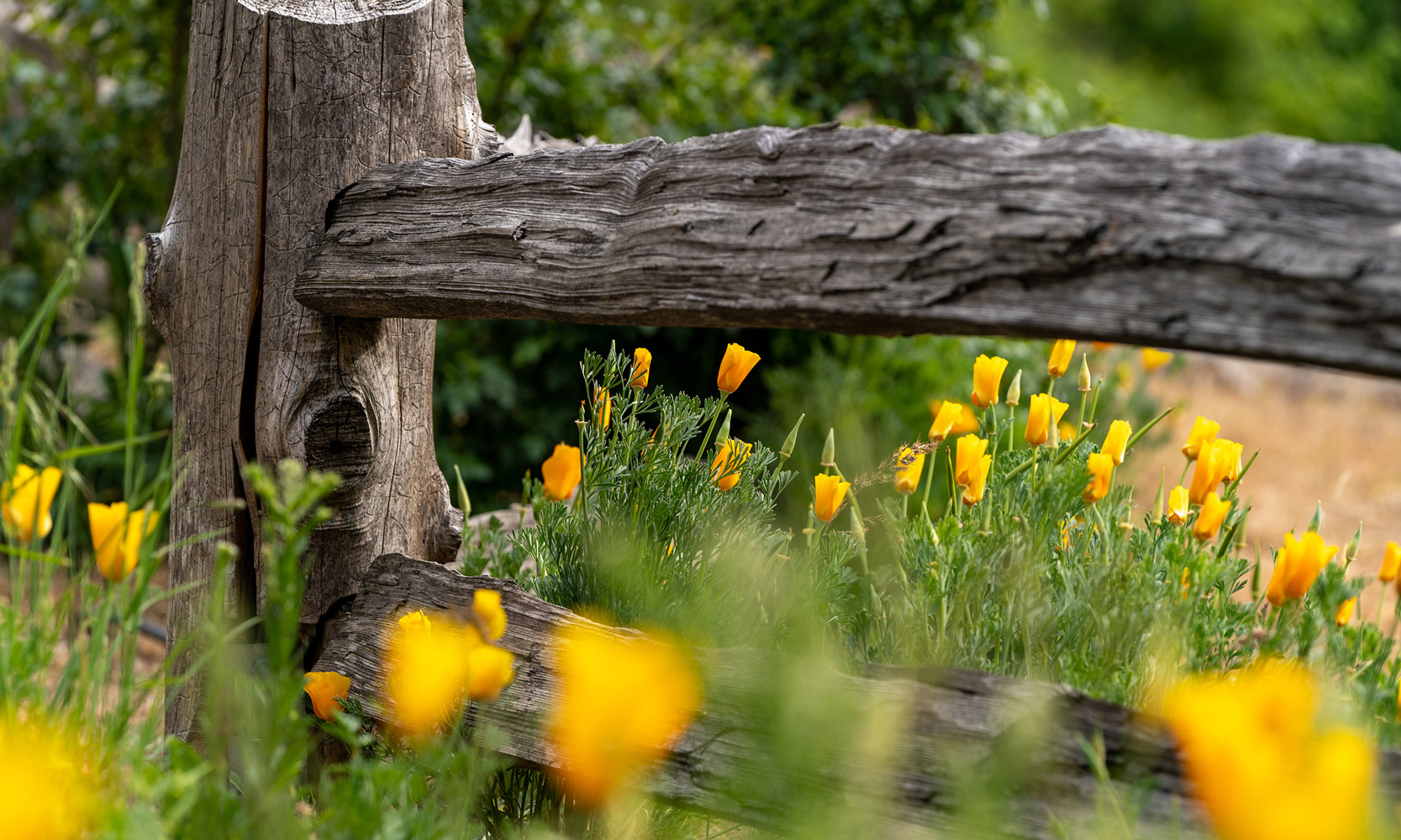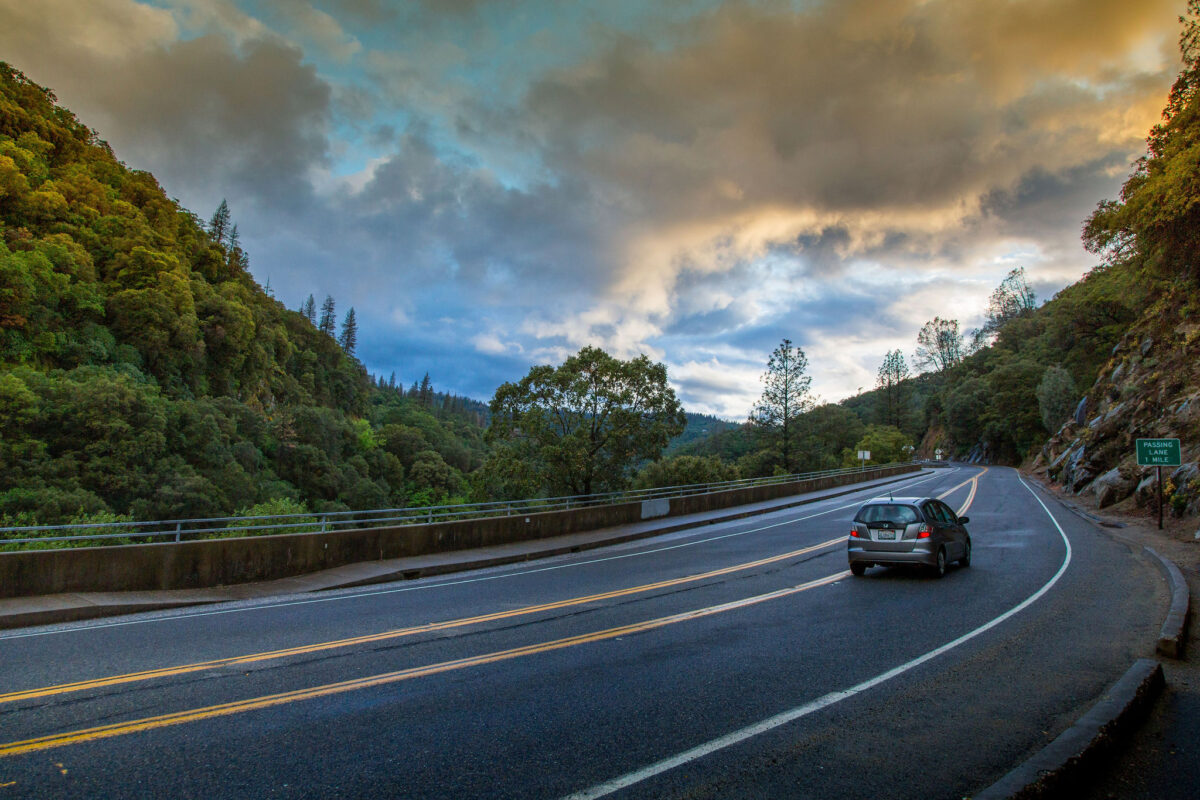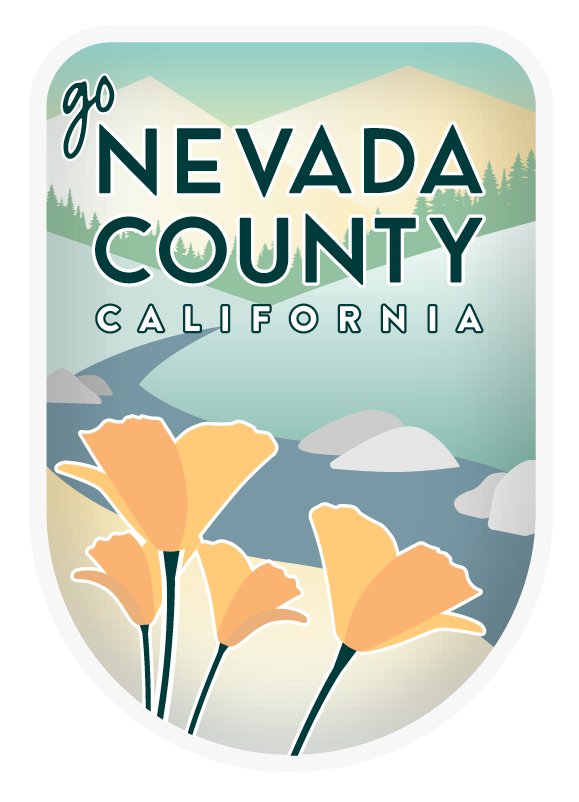Lovers of history will never get bored in Nevada County. Everywhere you look, the landscape has been shaped by the people who walked before. From the town of Rough & Ready that seceded from the United States to the unique 20 Mile Outdoor Museum on arguably the most scenic drive in the country, here’s 5 must see historic sites in California Nevada County that you need to visit.
A Quick Overview Of Nevada County’s History
For thousands of years, the Nisenan people made their home in the forests, meadows, and watersheds of what is now Nevada City and Grass Valley. In the Eastern part of the county, the Truckee-Tahoe region and Donner Summit were important summer gathering places for the Washoe Tribe (Wašiw) and earlier Martis people.
Then came the Gold Rush. A flood of people from around the world converged on this quiet part of California. All hoping to get rich fast, they forever upset the natural balance of the land, animals and Indigenous people in their feverish search for the precious metal. Located 75 miles from Sutter’s Mill, Nevada City and Grass Valley quickly became the largest and richest gold mining towns in California.
History Is Everywhere You Look
If you’re a first-time visitor to Nevada County, walking the historic downtowns and visiting the many museums and four State Parks is a must to understand the history of this place. But this is just the tip of the iceberg. If you’re looking to stay awhile and dive a little deeper, you’ll discover a treasure trove of historical sites and stories just off the beaten path that are well-worth exploring.
Get started by checking out the interactive map created by Nevada County Landmarks Commission. Or visit the archives at Nevada County Historical Society and set your GPS for the destinations below.
Top 5 Must See Stops for History Buffs
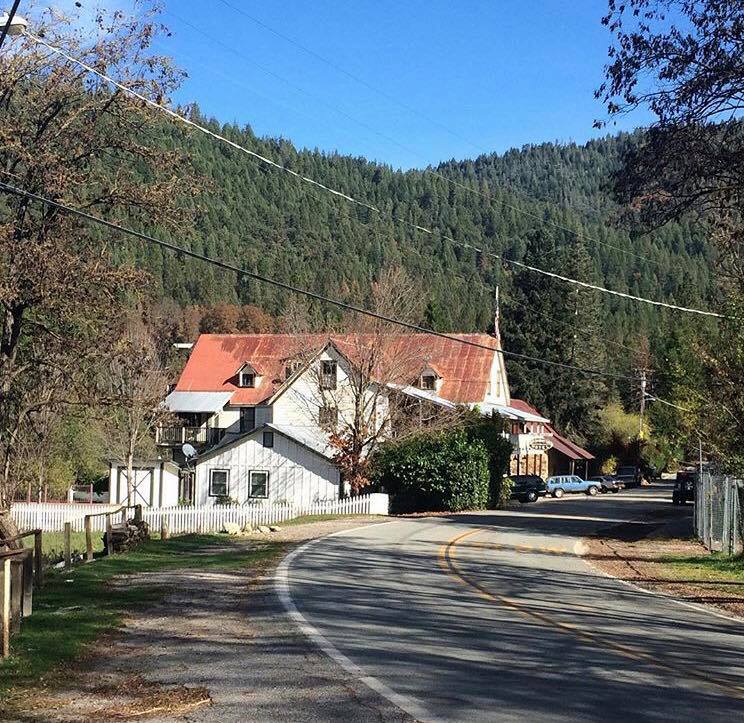
Little Town of Washington
First settled in 1849, Washington was a high point on the South Yuba River where gold was discovered. By 1880, miners in Washington had recovered over $10,500,000 in gold. Today, the town’s population hovers around 180. It swells during the summer months with recreationists who come for the swimming, hiking, and camping.
Look for several historical plaques in the town. You’ll find them on buildings such as the Kohler Building, Brimskill Building, and the one room schoolhouse that shuttered only recently due to dwindling enrollment.
A local’s favorite is the Washington Hotel overlooking the South Yuba River. Get a cold beverage from the bar and a bite to eat at this landmark. First built on this site in 1857, it burned down twice over its lifetime. Oh… if walls could talk.
Fun side trip: Stop by the Washington Ridge Overlook on Highway 20. From here, you’ll get fabulous views and a historical marker along the Emigrant Trail. In 1850, a year after gold was discovered on Deer Creek in Nevada City, the Overland Emigrant Trail branched off the original Bear River route to climb Washington Ridge on the way to Nevada City and Sacramento Valley.
Learn more here.
20 Mile Museum
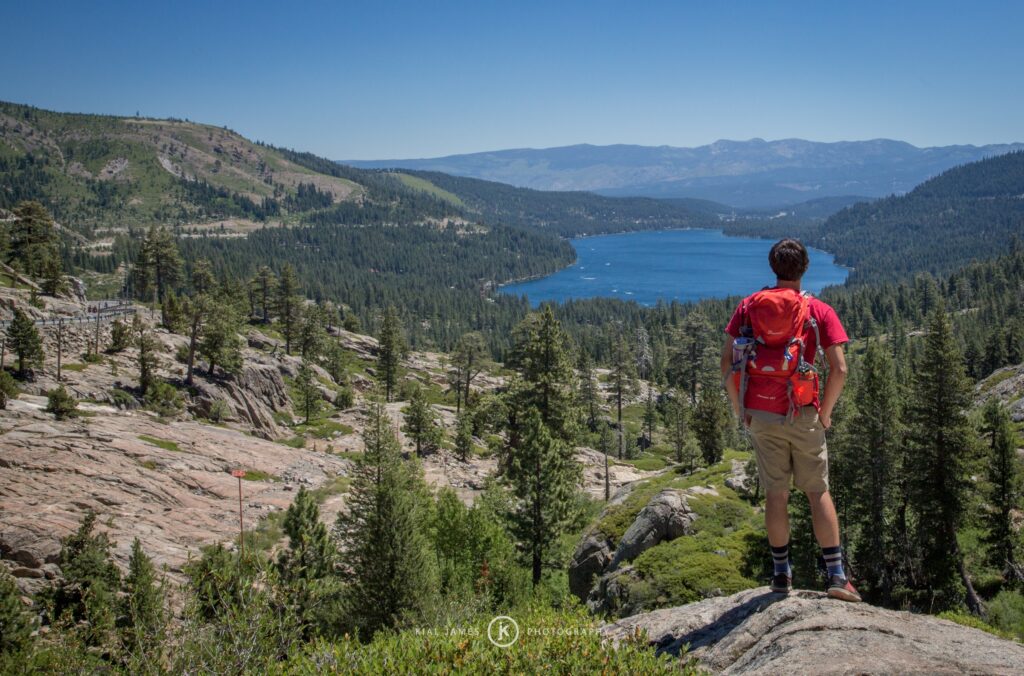
Take a scenic journey through time with the 20 Mile Museum – a collection of interpretive signs along Old Highway 40 towards Truckee that was part of what was the Lincoln Highway. The drive takes you from Cisco Grove to Donner Lake. You’ll find dozens of interpretive signs that tell a different story about the fascinating history of Donner Summit. Learn about ice harvesting, the transcontinental railroad, Native American petroglyphs, the history of skiing, and more! Along the way, you’ll pass over the Rainbow Bridge with an iconic view of Donner Lake. It arguably has the prettiest view of the landscape in Nevada County. Learn more at Visit Truckee-Tahoe.
Rough & Ready
Established in 1849, it’s named after the Rough and Ready Company of miners from Wisconsin. The town declared its secession from the Union as The Great Republic of Rough and Ready, largely to avoid mining taxes on April 7, 1850. Less than three months later, the town voted to rejoin the Union on the Fourth of July.

Look for the site of Fippin’s Blacksmith Shop. Local legend has it that one of Lotta Crabtree’s earliest performances was atop the anvil here. Other landmarks include the Rough & Ready Schoolhouse, Rough and Ready Cemetery, and Rough and Ready Tollhouse. The toll house was one of the last in the West. It was also the site of Wells Fargo express office and stage stop. It’s said to be the secret rendezvous place of Joaquin Murietta and Lola Montez. Like any Wild West story, take it with a grain of salt as the accuracy of E Clampus Vitus plaques is questionable. As a result of disastrous fires, only a few of the original 1850s structures remain today.
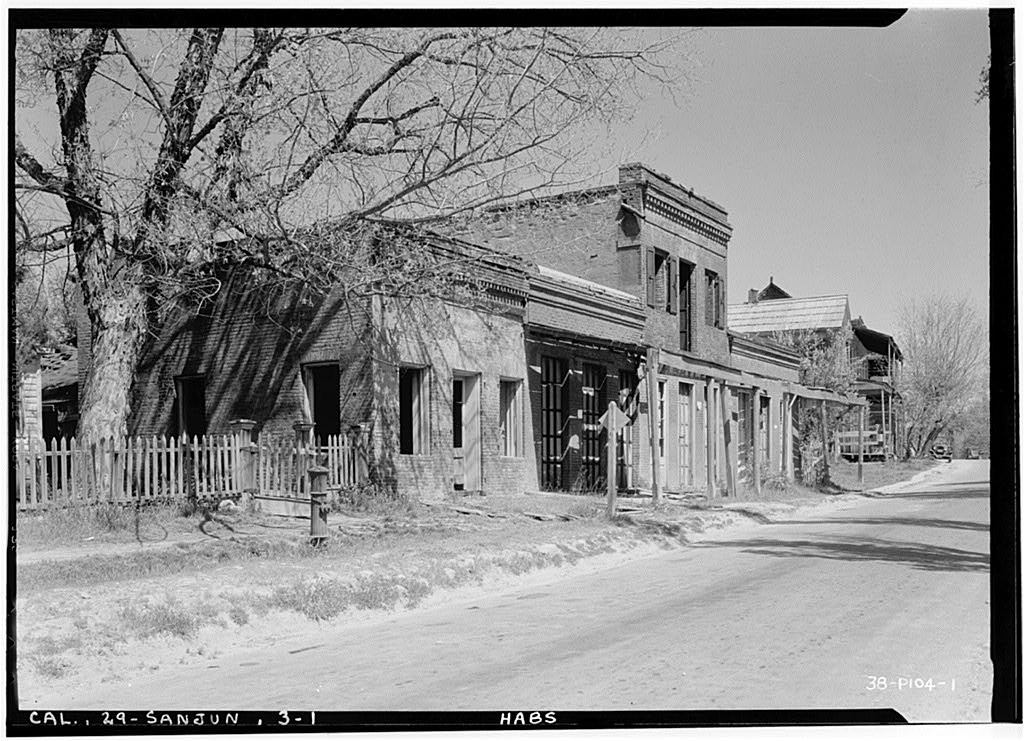
North San Juan
Head up old Highway 49 and take a step back into the wild west when you visit the town of North San Juan. Be sure to check out the Methodist Episcopal Church erected in 1857 and the Wells Fargo building. The church structure is the earliest existing church in the county and contains early furnishings. While in “town”, stop in at the local haunt, The Ridge Cafe, for tasty organic food, great coffee, and local flavor like nowhere else.
Down the road on Cemetery Alley, you’ll find the lovely tree covered setting, the North San Juan Protestant Cemetery. The cemetery built in 1851 holds the remains of hundreds of individuals, with many dating back to the Gold Rush. The grave monuments are fine examples of 19th century gravestone art and history.

North Bloomfield
To understand the environmental destruction caused by the Gold Rush, no other site in Nevada County is as telling as Malakoff Diggins. It was home to the world’s largest hydraulic gold mining operation. In the search for gold, the North Bloomfield Mining Company used high pressure water canons called ‘monitors’ to tear down mountainsides. These jets left behind a massive 1,600 acre pit measuring 7,000 feet long by 3,000 feet wide. The dramatic canyon scar is still visible today, more than a century later.
North Bloomfield, also known as “Humbug”, is a beautifully preserved ghost town and part of the Malakoff Diggins State Historic Park. You can sign up for guided walking tours. Visit the museum or stroll the old townsite and hike miles of trails. Extend your trip and stay in one of the scenic campgrounds. Be sure to set your calendar for the annual Humbug Day celebration. Held each June, this event brings the old townsite alive with history reenactments and old time activities. Activities include gold panning for the kids, food, music, and a parade.
Pro Tip: Bring your camera and cash for the park entrance fee. Prepare for a long day with all the essentials you’ll need to stay comfortable: food, water, solid walking shoes, sun protection, plenty of gas in the gas tank, etc.
